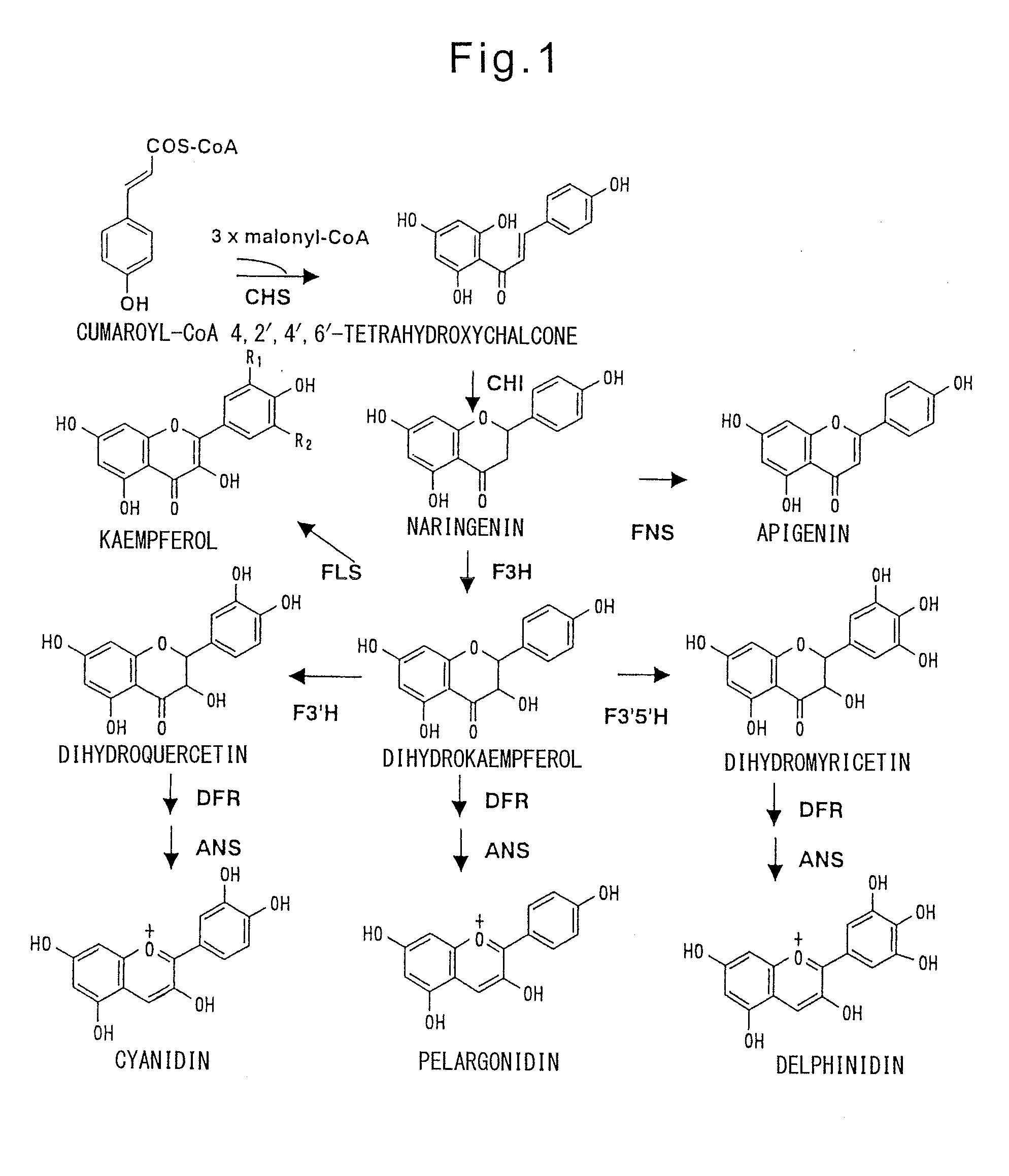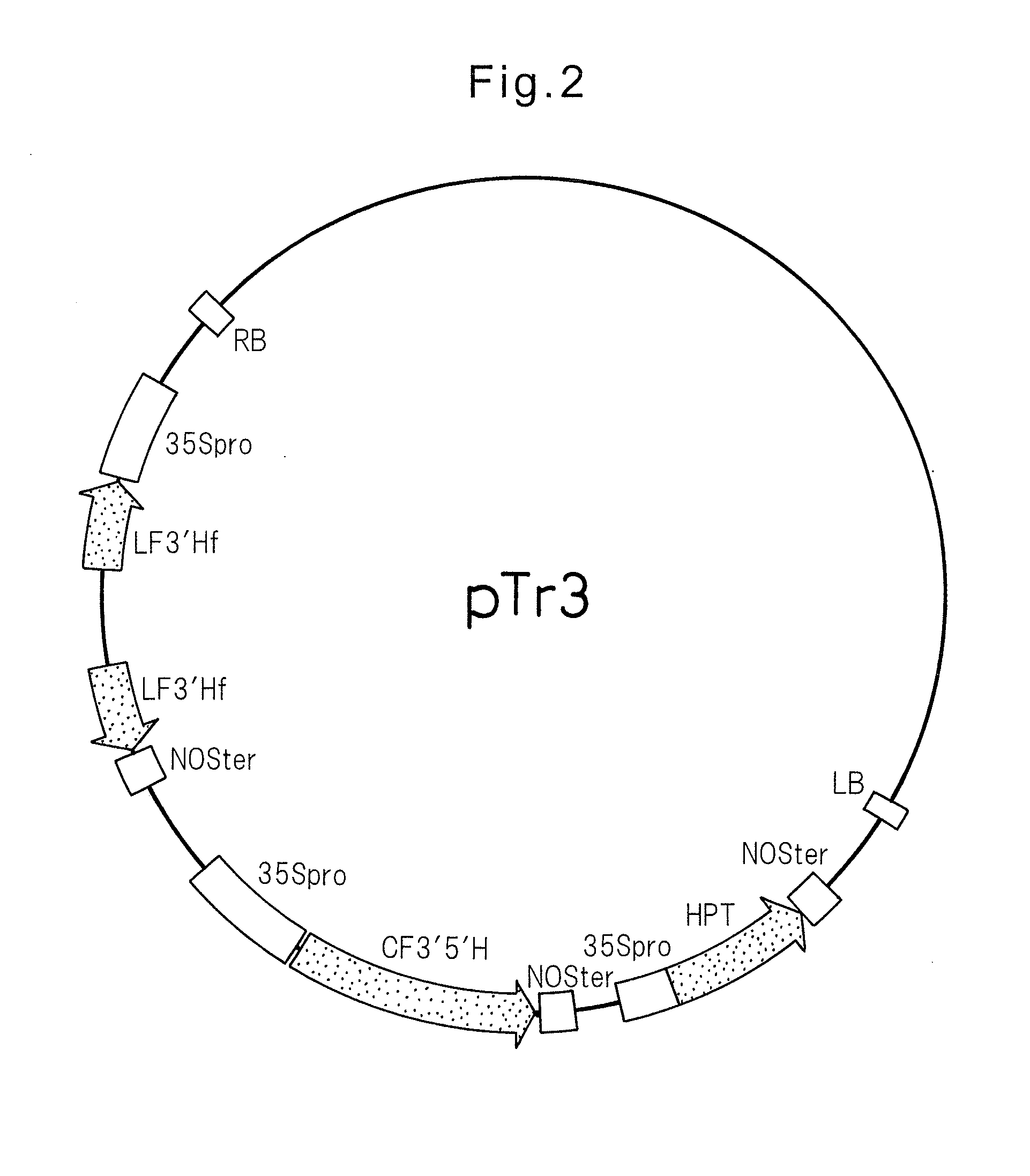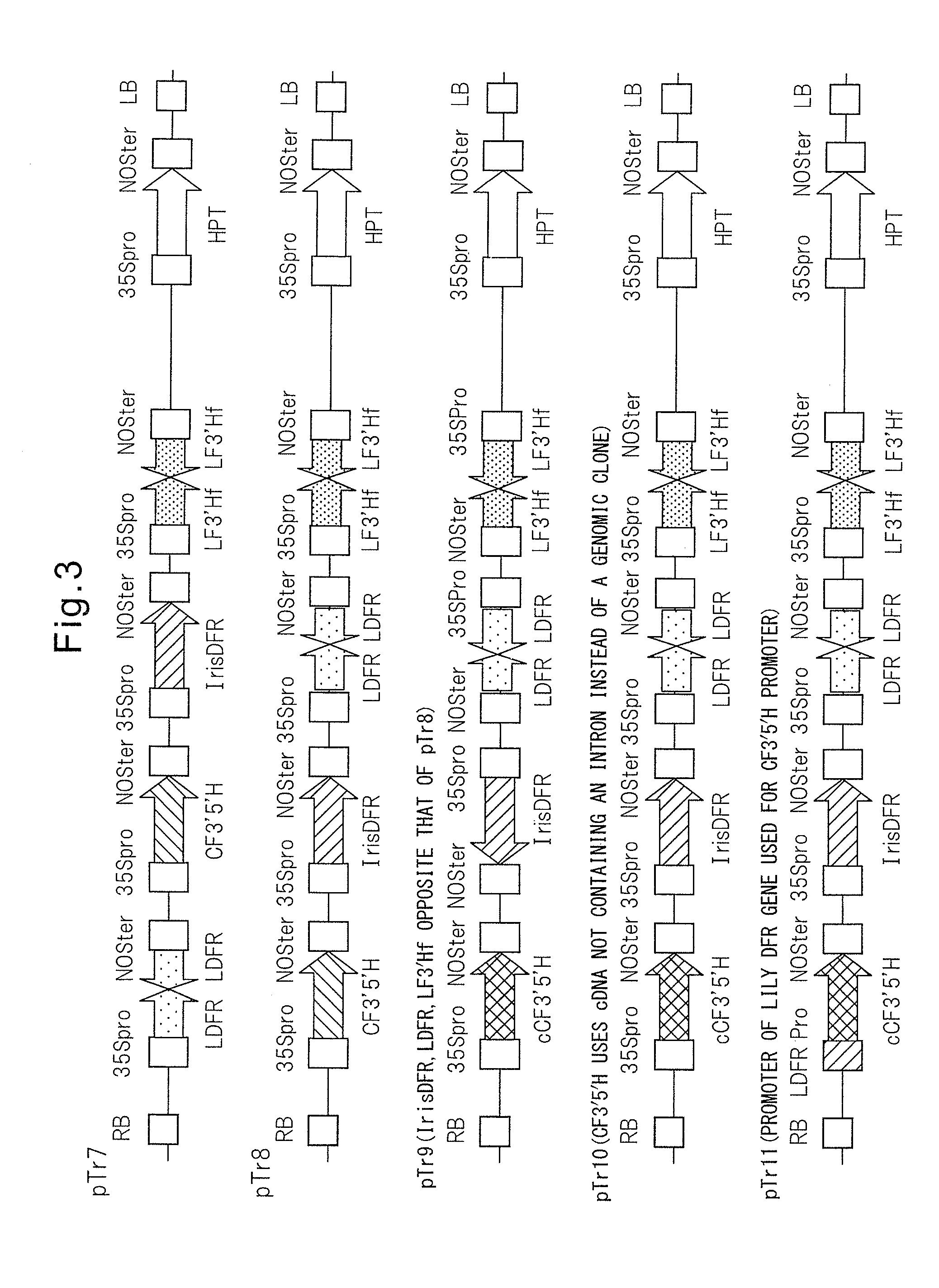Method for producing lilies containing delphinidin in the petals thereof
- Summary
- Abstract
- Description
- Claims
- Application Information
AI Technical Summary
Benefits of technology
Problems solved by technology
Method used
Image
Examples
reference example 1
Expression of Periwinkle F3′5′H Gene in Lilies
[0083]Plasmid pNAVFH (see Non-Patent Document 9, binary vector for expressing periwinkle F3′S′H gene in plants) was introduced into Agrobacterium strain EHA101. The lily variety, Acapulco (pink flowers), was transformed using this genetically modified Agrobacterium. Although lily transformation was carried out with the method described in Non-Patent Document 10, for example, the method used is not limited thereto.
[0084]Two to three years are required after acquiring a plant tissue culture of the transformed lilies in order to investigate whether the introduced F3′5′H gene functions in lilies and induces accumulation of delphinidin. Analyzing anthocyanins present in cultured petioles by focusing on observation of anthocyanin coloring in the petioles at least makes it possible to rapidly determine whether the introduced gene has not functioned or has hardly functioned at all. Plant tissue cultures of the transformed lilies of the resulting...
reference example 2
Expression of Cineraria F3′5′H Gene in Lilies
[0085]An approximately 1.7 kb DNA fragment obtained by digesting plasmid pSPB2774 containing cineraria-derived F3′5′H cDNA Ci5a18 (see Patent Document 9) with SmaI and XhoI, a DNA fragment containing cauliflower mosaic virus 35S promoter (to also be referred to as “35S promoter”) obtained by digesting plasmid pBI1221 with HindIII and BamHI, and a DNA fragment containing the replicon of a DNA fragment obtained by digesting plasmid pSPB176 (see Patent Document 7) with HindIII and SalI, were ligated to obtain plasmid pSPB3472. A DNA fragment obtained by digesting this plasmid with AscI and PacI (containing a sequence in which 35S promoter, Ci5a18 and nopaline synthase terminator are ligated) was ligated with a DNA fragment obtained by digesting #493 with AscI and PacI to obtain plasmid pSPB3376. This was then introduced into lilies using Agrobacterium as described in Reference Example 1 to acquire plant tissue cultures of 65 cultivars of tra...
reference example 3
Expression of Gentian F3′5′H Gene in Lilies
[0086]An approximately 1.7 kb DNA fragment obtained by digesting plasmid pGHF48 containing gentian F3′5′H cDNA (see Patent Document 4) was ligated with plasmid pSPB176 digested with BamHI and SalI to obtain plasmid pSPB3329. The promoter portion was removed by digesting this with HindIII and BamHI. Plasmid pSPB3473 was then obtained by introducing a DNA fragment obtained by digesting pBI1221 with HindIII and BamHI (containing 35S promoter) therein. A DNA fragment obtained by digesting this plasmid with AscI and PacI (containing a sequence in which 35S promoter, gentian F3′5′H cDNA and nopaline synthase terminator are ligated) was ligated with a DNA fragment obtained by digesting pSPB493 with AscI and PacI to obtain plasmid pSPB3378. This was then introduced into lilies using Agrobacterium as described in Reference Example 1 to acquire plant tissue cultures of 65 strains of transformed lilies. Petioles in which anthocyanins had accumulated w...
PUM
| Property | Measurement | Unit |
|---|---|---|
| Fraction | aaaaa | aaaaa |
| Fraction | aaaaa | aaaaa |
| Fraction | aaaaa | aaaaa |
Abstract
Description
Claims
Application Information
 Login to view more
Login to view more - R&D Engineer
- R&D Manager
- IP Professional
- Industry Leading Data Capabilities
- Powerful AI technology
- Patent DNA Extraction
Browse by: Latest US Patents, China's latest patents, Technical Efficacy Thesaurus, Application Domain, Technology Topic.
© 2024 PatSnap. All rights reserved.Legal|Privacy policy|Modern Slavery Act Transparency Statement|Sitemap



